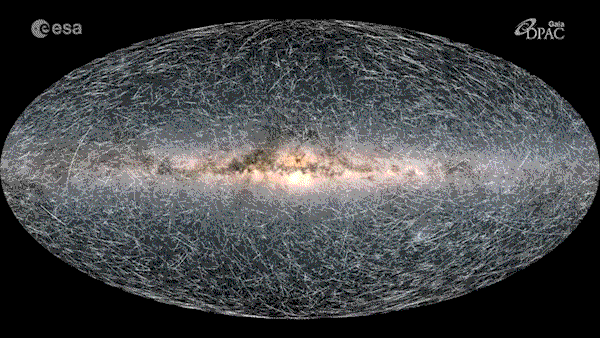Key takeaways:
- Australian astronomers mapped 83% of the observable universe in just 300 hours using the ASKAP radio telescope, a record-breaking achievement.
- The survey revealed about 3 million galaxies in the southern sky, with up to 1 million of them potentially being previously undiscovered.
- Unlike traditional sky surveys that take months or years, this new effort, called the Rapid ASKAP Continuum Survey, was completed in just a few weeks.
- ASKAP’s 36 antennas captured panoramic sky images, which were combined by supercomputers into a massive map of 903 images, each containing 70 billion pixels.
- With this successful survey, scientists are excited for future studies, expecting to uncover tens of millions of new galaxies in upcoming observations.
______________________
Astronomers mapped 83% of the sky and discovered 1 million new galaxies in just 300 hours.

Australian astronomers have achieved a remarkable feat by mapping 83% of the observable universe in only 300 hours, thanks to the Australian Square Kilometre Array Pathfinder (ASKAP) radio telescope. This sky survey, dubbed the Rapid ASKAP Continuum Survey, marks a major milestone for the ASKAP telescope, which had never before used its full 36-antenna array for a single survey. The project is a significant leap forward in the study of galaxies and cosmic phenomena, revealing millions of previously unknown galaxies.
The ASKAP, located in the remote Western Australian Outback, has been operational since 2012, mainly focusing on detecting radio signals, including fast radio bursts. However, it wasn’t until now that astronomers fully utilized its potential to scan the entire sky. The telescope was able to capture detailed radio images of the southern sky at an unprecedented speed.
Mapping Millions of Galaxies
The survey mapped around 3 million galaxies, and researchers estimate that as many as 1 million of these galaxies were previously unknown to science. Published in the Publications of the Astronomical Society of Australia, this groundbreaking research is only the beginning. Lead author David McConnell, a CSIRO astronomer, expressed excitement over the results, stating that the success of this survey opens the door to discovering tens of millions of new galaxies in future surveys.
The ASKAP’s 36 antennas worked together to create a detailed “Google map of the universe,” capturing 903 individual images that were later combined into a sky map. Each image contained a staggering 70 billion pixels, dwarfing the highest-definition cameras on the market today, which capture only a few hundred million pixels per image.
Future Potential and Public Access
Despite the complexity of the task, the survey was completed in just a few weeks, while other all-sky surveys can take months or even years. This rapid survey, thanks to ASKAP’s high efficiency, provided data that will be available to the public through CSIRO’s Data Access Portal. This allows scientists worldwide to analyze the findings and plan for more detailed future explorations.
ASKAP’s success in this first full survey demonstrates the immense potential of the telescope in advancing our understanding of the universe. The data gathered will help scientists learn more about how galaxies form, evolve, and interact with each other, providing deeper insights into the structure of the cosmos.
As researchers gear up for even more detailed sky surveys, ASKAP is poised to revolutionize our knowledge of the universe, with expectations of discovering tens of millions of new galaxies in the years to come. This breakthrough also highlights the importance of radio telescopes and large-scale collaborations in astronomy, as they allow scientists to uncover new cosmic mysteries at an unprecedented scale and speed.




